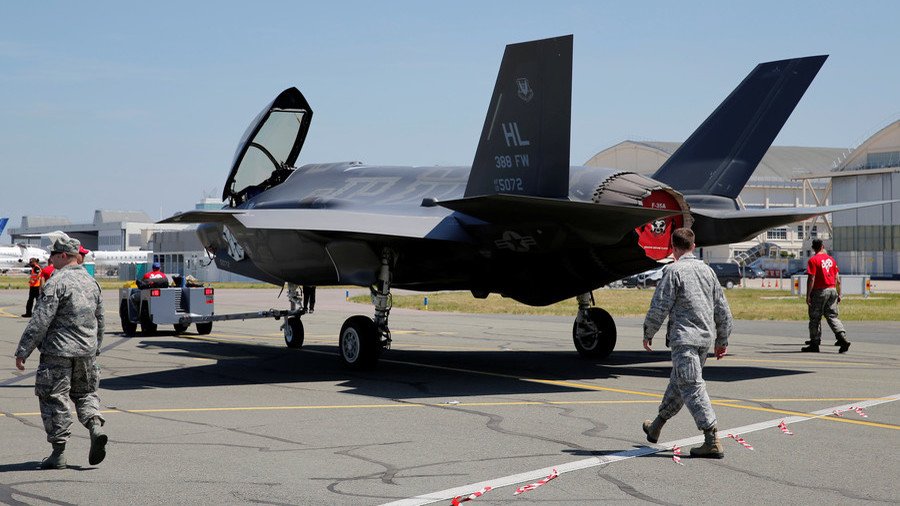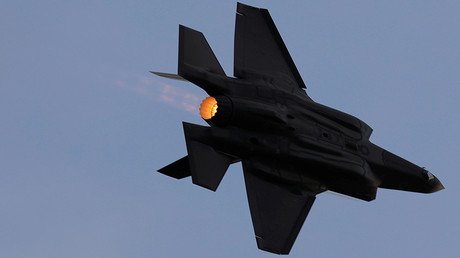Pentagon hiding ‘life-threatening’ F-35 design flaws to meet deadline – watchdog

The US F-35 program is apparently still suffering from hundreds of major technical flaws and the military is trying to conceal their severity to avoid schedule delays and cost overruns, a watchdog said.
Officials overseeing the development of the F-35 fighter jets have apparently deliberately downplayed some critical deficiencies that can endanger lives of both pilots and troops on the ground, said the Project On Government Oversight (POGO), an independent watchdog. It obtained the Pentagon agency’s documents which show that there’s no justification or plans to fix the flaws still plaguing the $1.5 trillion program.
Instead of fixing them, the problems were just re-categorized. The Deficiency Review Board of the Joint Strike Fighter Program Office downgraded 19 Category I problems to a less serious Category II, without providing any plan to correct ten of those critical design flaws. Category I deficiencies “may cause death, severe injury, or severe occupational illness; may cause loss or major damage to a weapon system; critically restricts the combat readiness capabilities of the using organization; or result in a production line stoppage,” according to the US military documents.
Category II deficiencies “could impede or constrain successful mission accomplishment.” The categories are assigned to the deficiencies by the testing personnel, who identify them during the test and evaluation process. In many cases, however, the board acted on its own “with no apparent justification or evidence that the flaws were in fact not as serious as initially categorized,” POGO said.
The list of the most critical issues includes problems with an emergency alert system when pilots eject, damage to the plane caused by the tail hook on the Navy variant, or the lack of any means for a pilot to confirm a weapon’s target data before firing, which could lead to troops on the ground being hit by friendly fire.
The Pentagon’s attempts to paper over serious problems with the F-35 are apparently caused by its desire to avoid further delays in the aircraft development schedule, POGO said. The F-35, built by Lockheed Martin, was supposed to finish the 16-year development phase this year.
“They want to be able to go up to Capitol Hill and say, ‘Nope, we don’t have any more Category 1 deficiencies,’” Dan Grazier, a military fellow at POGO, told Washington Examiner, adding that the developers are “just three weeks away from” a major deadline for initial test and evaluation of the aircraft, which comes on September 15.
In June, the US congressional watchdog, the Government Accountability Office (GAO) also warned the Pentagon against moving to mass production of the planes until all technical issues are resolved.
The same report also found almost 1,000 various technical problems affecting the F-35 jets, including 111 designated as Category 1 flaws. The issues ranged from helmets that can hinder pilots’ vision to a stealth-coating that might “melt” during a flight at supersonic speed.
The fifth-generation stealth fighter built by Lockheed Martin was supposed to be a modular design, with modifications adapting it for service in the US Air Force (F-35A), the US Marine Corps (F-35B) and the US Navy (F-35C). However, the aircraft development repeatedly missed the deadlines and the cost of each individual fighter jet is now estimated to surpass $120 million.
The notorious jets have also repeatedly faced various technical issues while flying. Most recently, an F-35 plane had to perform an emergency landing after experiencing a technical malfunction over Floridian skies. When it already parked, the jet’s front nose gear collapsed, adding to the misery. In December 2017, a US Air Force F-35 fighter jet lost a panel during a “routine training mission” in Okinawa.
















